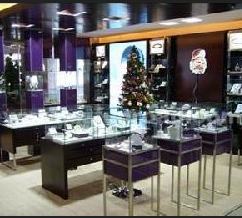Articles and News
Tips To Get To Your Best Merchandising Plan | September 17, 2018 (0 comments)

Omaha, NE—The merchandise plan articulates your desired outcome by product groups — revenue, gross profit percentage. If it’s too detailed, it can be too unwieldy to implement. If it’s too top-level, it won’t direct your day-to-day inventory management and buying.
It’s most effective to evaluate and plan your inventory by product groups such as designer collections, other collections or programs, and not by the merchandise hierarchy in your computer system. Many hierarchies seem to be based on materials or components (diamond, color, metal, etc.), which is too granular for a merchandise plan.
Depending on your inventory software, you may need to code your SKUs with the product group name so you can easily extract the data needed for the plan, and to monitor your progress each month.
Your product groups should be based on style, look and feel, and should easily relate to your merchandising strategy goals. If one of your goals is “Expand my bridal business by 30 percent over last fiscal year by creating three in-store branded collections by March, targeted to entry level price points of $1,000,” you would add the three collections into the plan with no historical data, only projected.
The plan can easily be created in Excel as a worksheet. At the top you have your company objectives for next year: sales revenue at cost, current inventory at cost, projected inventory at cost, margin percent and margin dollars. All your cells should balance to your objectives and adjust as you are working on your plan.
Your plan should have the following data by your designated product groups:
- Sales for this year at cost
- Percentage variance (increase/decrease) over the last year
- Projected sales for next year
- Current inventory at cost
- Projected inventory at cost
- Variance in dollars and percent
- Gross margin percent and dollars for this year
- Gross margin dollars variance over last year
- Projected gross margin and dollars for next year
The part that requires the most thought and consideration is your projections. This is not a rote numerical formula or calculation; rather you are creating your road map for your replenishment, new purchasing and aged inventory.
While working on your plan you should have your merchandising strategy available so you can periodically check to see if your plan accurately reflects your strategy. You will decide if you want to add new product groups, discontinue others, grow sales, decrease sales, increase margins or margin dollars, decrease margins or margin dollars, and which inventory levels need to be increased or decreased.
When the plan is completed and you have balanced to your objectives, you can now break it down by month, so you can see your progress. Every purchasing or inventory management decision should be viewed through the lens of your plan. It’s very rewarding to see your progress toward having the type of offerings and assortments that your customers desire.
The Edge Retail Academy provides customized strategies for retailers and vendors to increase profits, optimize growth, reduce debt, create profitable inventory solutions, build effective teams, and enhance brand loyalty and profitability. The Academy is committed to helping jewelry businesses improve their bottom line while reducing uncertainty and stress. Edge Retail Academy software and business advisors provide real-world knowledge and advice for guaranteed results, all on a “no-contract” basis. Call (877) 569-8657, ext. 1, email Becka Johnson Kibby, Becka@EdgeRetailAcademy.com, or visit www.edgeretailacademy.com







